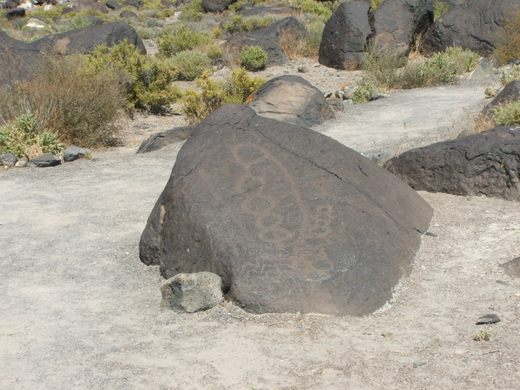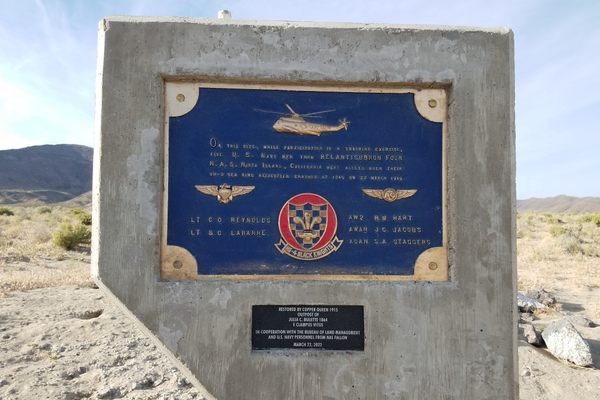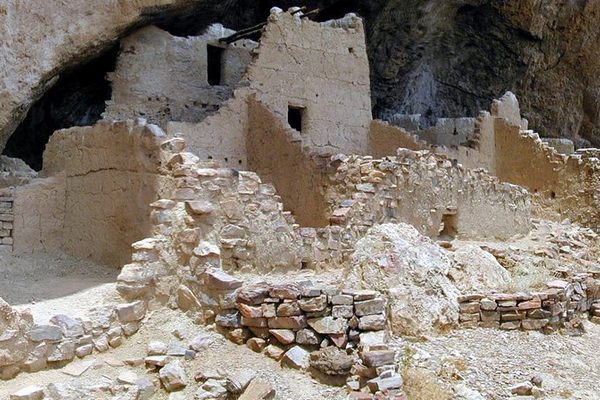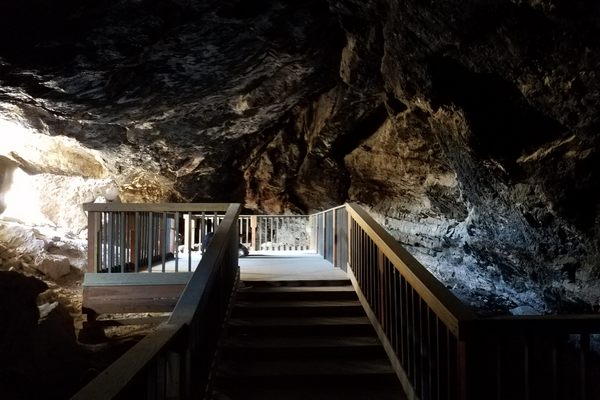Hidden Cave at Grimes Point
This cave was hidden for thousands of years, storing the worldly goods of ancient Native Americans.
There is a cave near Fallon, Nevada that’s basically a garage. A 3,500 year old garage that stored tools, spears, baskets, and fishing gear, and other stuff for millennia.
Aptly called Hidden Cave, the site is protected under the watchful eye of the Bureau of Land Management, and has a number of museums, universities and archaeologists looking after it too. Since 1972 the cave has been listed on the National Register of Historic Places, but it was uncovered 45 years earlier by a tried and true method of discovery—four kids out looking for treasure.
As far back as the late 19th century, rumors had swirled around Fallon that there was secret bandit treasure to be found in a cave. Since no one knew what cave, four local boys, determined to find it, scoured the rocky hillsides. They stumbled onto what would later be called Hidden Cave, but found no bandit booty. Still, word of the cave and its contents slowly got around, finally reaching the ears of a local archaeologist, Margaret Wheat, who organized the first excursion to the cave in 1935.
At the time, Hidden Cave was so packed with silt and dust and bat guano that it was difficult to get a sense of just how jammed it was with a valuable record of ancient Native American hunter-gatherers. It took a few years before there was a major attempt to cut through the layers, but in the 1940s and 1950s, and again in the late 1970s, teams of archaeologists and students did the dirty work, and began documenting and cataloging that record.
Hidden Cave was never used for shelter—even thousands of years ago it was way too dark, dusty and cramped to live in—but for hundreds of years it was used by the earliest Native Americans in the area, from at least 1800 B.C. to about 1500 B.C. as mini storage.
What is now the arid Nevada desert was then a vast area of marshland, and nomadic tribes, making use of the natural resources, needed a safe place to stash their gear as they were on the move. Hidden Cave was used as a kind of combined tool shed, pantry and safe deposit box, its entry so well hidden that things could be left behind, undisturbed. Thousands of artifacts, spread out over diverse caches, have been found and identified through the combined efforts of archeologists and members of the Fallon Paiute-Shoshone tribe.
After the last major excavation in the late 1970s the cave was opened to the public, remaining staged for researchers and visitors of all kinds to see firsthand the discoveries of previous excavations. It’s a glimpse into the painstaking and back-breaking work, vital to cataloging such a rich and remarkable site.
Know Before You Go
Hidden Cave is part of the Grimes Point Archaeological Area, about 10 miles southeast of downtown Fallon. On the second and fourth Saturday of each month (except Federal holiday weekends) the Bureau of Land Management along with the Churchill County Museum give free public tours of the Cave, caravanning from the Museum in Fallon. It’s a 15 minute hike up the trail to the Cave, and good hiking shoes and water are a must. (Note: unfortunately the trail and cave are not handicapped accessible or suitable for small kids). If you can’t make the scheduled tours, check in with the Museum about private group tours – those can be arranged too for a small fee. There is also a trail of ancient petroglyphs at Grimes point, to add a little rock art to your adventure. These carvings are some of the strangest cartooney-doodley abstractions you'll ever see, and they are large: each is several feet long. Well worth the short stroll it takes to see them

































Follow us on Twitter to get the latest on the world's hidden wonders.
Like us on Facebook to get the latest on the world's hidden wonders.
Follow us on Twitter Like us on Facebook